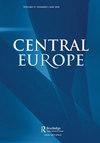Orientalist Body Politics. Intermedia Encounters between German and Polish Jews around 1800
IF 0.1
2区 历史学
Q2 HISTORY
引用次数: 0
Abstract
ABSTRACT In the late eighteenth and early nineteenth centuries, the transformation of the German Jews’ appearance was often defined in terms of Europeanization and modernization, whereas the so-called Polish Jews were reproached for clinging to their outdated ‘Oriental’ caftans, beards, and head coverings. Inner-Jewish differences were moulded in the terms of a simultaneity of the non-simultaneous, as Polish Jews were stylized into anachronistic, semi-Oriental figures by their German peers. The paper retraces the genesis of this pattern of thought and analyses its functions. Bringing together a disparate range of textual and pictorial evidence, it asks how and why the spatial-temporal divide of West/Present and East/Past came to be established in late-eighteenth-century debates about Jewish Emancipation and in what ways it helped Christians and Jews alike to stylize the European Enlightenment into a civilizing mission which had to be enforced by means of a ‘Western’ body regime. In sum, it argues that the body politics which helped organize the sociocultural changes of Jewish life around 1800 were premised on modern Orientalism and on modern concepts of history, including emphatic notions of progress and perfectibility.东方主义的身体政治。1800年左右德国犹太人和波兰犹太人之间的媒介接触
在18世纪末和19世纪初,德国犹太人的外貌变化通常被定义为欧洲化和现代化,而所谓的波兰犹太人则因坚持他们过时的“东方”长袍、胡须和头巾而受到指责。犹太人内部的差异被塑造成非同时的同时性,就像波兰犹太人被他们的德国同辈塑造成不合时宜的半东方人物一样。本文回顾了这种思维模式的起源,并分析了其功能。汇集了不同范围的文本和图像证据,它询问了西方/现在和东方/过去的时空划分是如何以及为什么在18世纪晚期关于犹太人解放的辩论中建立起来的,以及它以何种方式帮助基督徒和犹太人将欧洲启蒙运动形式化为一种文明使命,这种使命必须通过“西方”身体政权来执行。总之,它认为,帮助组织1800年左右犹太人生活的社会文化变革的身体政治是以现代东方主义和现代历史概念为前提的,包括强调进步和完美性的概念。
本文章由计算机程序翻译,如有差异,请以英文原文为准。
求助全文
约1分钟内获得全文
求助全文
来源期刊

Central Europe
HISTORY-
CiteScore
0.20
自引率
0.00%
发文量
7
期刊介绍:
Central Europe publishes original research articles on the history, languages, literature, political culture, music, arts and society of those lands once part of the Habsburg Monarchy and Poland-Lithuania from the Middle Ages to the present. It also publishes discussion papers, marginalia, book, archive, exhibition, music and film reviews. Central Europe has been established as a refereed journal to foster the worldwide study of the area and to provide a forum for the academic discussion of Central European life and institutions. From time to time an issue will be devoted to a particular theme, based on a selection of papers presented at an international conference or seminar series.
 求助内容:
求助内容: 应助结果提醒方式:
应助结果提醒方式:


